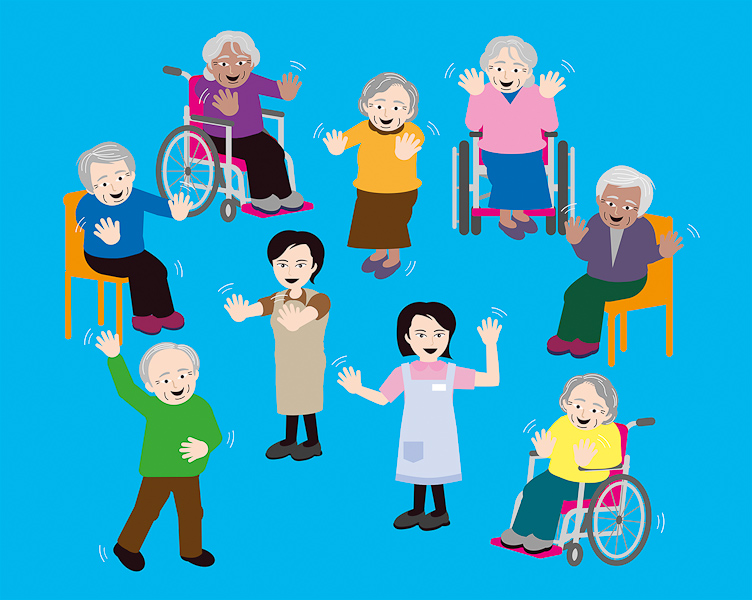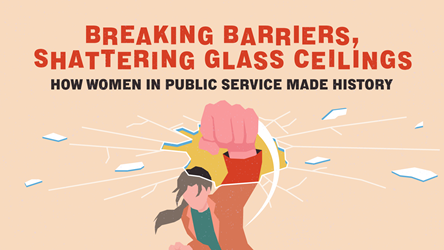Bonding To The Beat: Active Ageing Through Dance

To soothing music in the background, the elderly at Villa Francis Home for the Aged clap their palms together at their bellies, then bring their wrinkled hands above their heads.
Mimicking a fountain, they spread their hands before bringing them back down, wiggling their fingers as though they were falling water droplets.
Under the guidance of the nursing home’s healthcare staff, the elderly learn other movements linked to the theme of a garden. Laughing, they flap their arms like birds flying through the air, or wash their hands in an imaginary pond.
This unusual activity is part of “Everyday Waltzes for Active Ageing”, a creative movement programme developed by contemporary dance company The ARTS FISSION Company.
Scaling up success
Originally, Everyday Waltzes started out as Arts Fission’s community outreach effort. Its dancers would visit senior activity centres and use music and movement to encourage the elderly to move.
This year, the dance company developed a new curriculum in collaboration with the Agency for Integrated Care (AIC), and began training staff at intermediate and long-term care (ILTC) facilities to carry out the programme.
A 12-week pilot, co-funded by the AIC and the National Arts Council, involved 15 Villa Francis residents and produced encouraging findings.
According to the AIC, the seniors showed improvements in their memory and also became more confident in avoiding falls. For example, one resident who previously had to be reminded to go to the washroom after meals now goes on her own without having to be prompted.
Since June, more than 40 healthcare staff from 20 ILTC locations have undergone 14 hours of training and coaching by Arts Fission at the AIC Learning Institute. The dance company worked with ArtsWok, an arts-based community development consultancy, to develop learning resources such as an instructional DVD, a music CD and training manuals.

Strengthening relationships
Apart from making it fun for elderly with mobility and cognitive issues to move about more than usual, Everyday Waltzes also stimulates the seniors’ imagination by showing them that everyday items or situations can become dance movements too, for instance, the act of peeling oranges or the ticking hands of a clock.
The care staff, who lead Everyday Waltzes, have also found additional opportunities to bond with their residents.
When a dance theme, for instance, household objects or Lunar New Year goodies, is decided, the care staff also talk to the seniors about these topics. This helps the staff to find out more about the seniors’ interests or past experiences.
One resident used to be aloof and unsociable. Through Everyday Waltzes, he became friendlier and started opening up to the care staff, talking about his experience as a gardener before his stroke. Now, he even teaches his peers the moves he has picked up from the sessions.
Ms Jade Ann Pen, a Villa Francis nursing aide, appreciates the programme. “We can interact with them easily, build rapport easily,” she says. “The residents can trust us… [When] they trust us… it’s easier for us to do [work].”
Ms Charmaine Tan, Manager, Community Care Development Division, AIC, says: “That bond [between staff and seniors] is very important in fostering good quality care. For the majority of staff, their job involves meeting their clients’ care needs. But when they do something together that is fun, it can be quite transformative and I think that’s what we’re seeing.”
All hands on deck
Ms Angela Liong, Founder and Artistic Director of Arts Fission, is glad that there is funding to train care staff to carry out Everyday Waltzes.
“I think in the long run you can’t just depend on one dance company to do the job. For the programme to be sustainable, we’re very happy to share this so that we can have other people to pick up this curriculum and carry on the work with their residents,” says Ms Liong.
This arrangement also benefits the care staff, if the Villa Francis experience is anything to go by. For Ms Joanna Abellera, another Villa Francis nursing aide, Everyday Waltzes has taught her to facilitate an arts-based programme, and developed her creativity, since staff are encouraged to customise the programme or create new actions to suit their residents. She has found greater joy at work too. “We see them happy, it makes us also happy. Because we think that we are caring for them better,” she explains.
Ms Jumir Cansino, a therapy aide, says dancing with the elderly helps her to relieve stress: “We enjoy the time together and laugh together, so for that moment you just forget everything.”
Collaborating to expand the programme
Marrying the arts and health is a new approach in eldercare that brings together partners from different disciplines.
The challenge for AIC and Arts Fission was in finding a common vocabulary to understand the sometimes different arts and health approaches and processes.
Ms Liong says: “Artists are used to working in open and fluid energy. This spontaneity often clashes with the structured protocol of established organisations. It does require a big dose of willingness and tolerance from all parties to cultivate mutual understanding.”
Says the AIC’s Ms Tan: “It was good that we were united in a vision to develop a good programme, and that would have helped us bridge any sort of different approaches that we have.”
ArtsWok, which was engaged to manage the project, facilitated regular evaluation sessions during the pilot phase with Arts Fission, the AIC and staff from Villa Francis to get feedback and better understand the needs of care staff. These sessions will help them refine the curriculum and training resources.
More Everyday Waltzes training sessions are set to begin next year, while further studies will be done to validate their benefits to the elderly.
Both the AIC and Arts Fission hope that these research findings, by proving that the arts can make a difference, will help to kick-start greater use of the arts in healthcare facilities here.
- POSTED ON
Nov 26, 2014
- TEXT BY
Tay Qiao Wei









